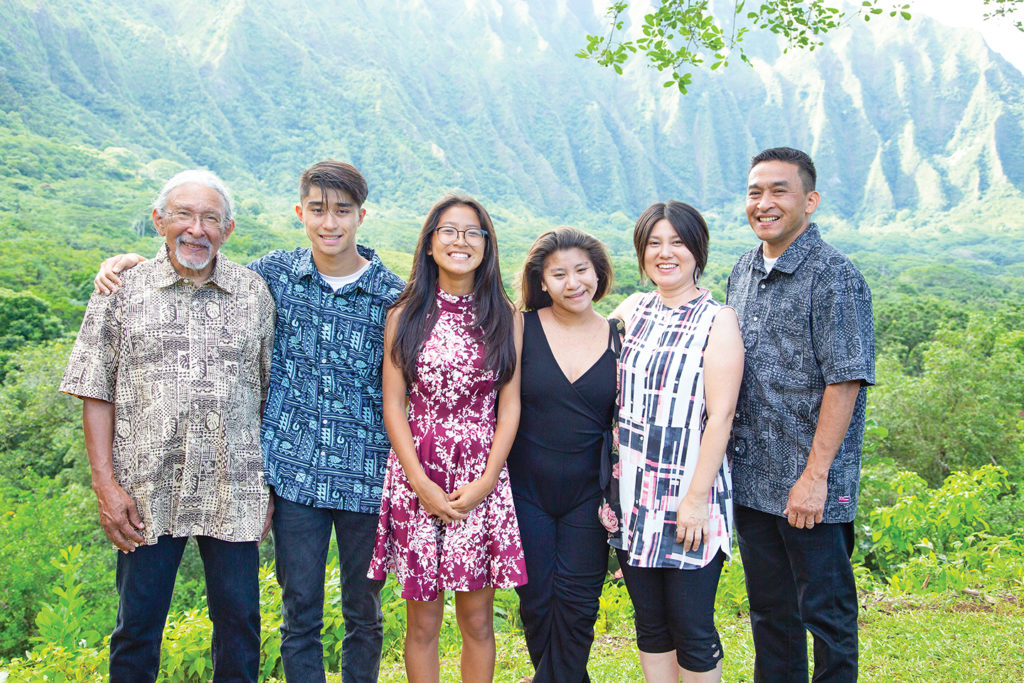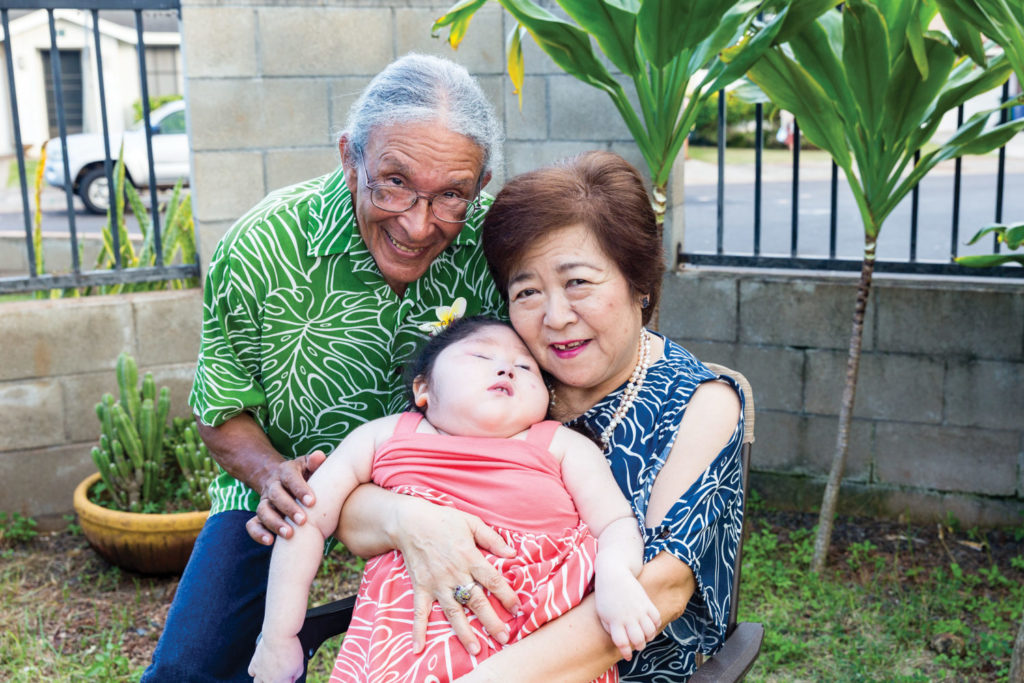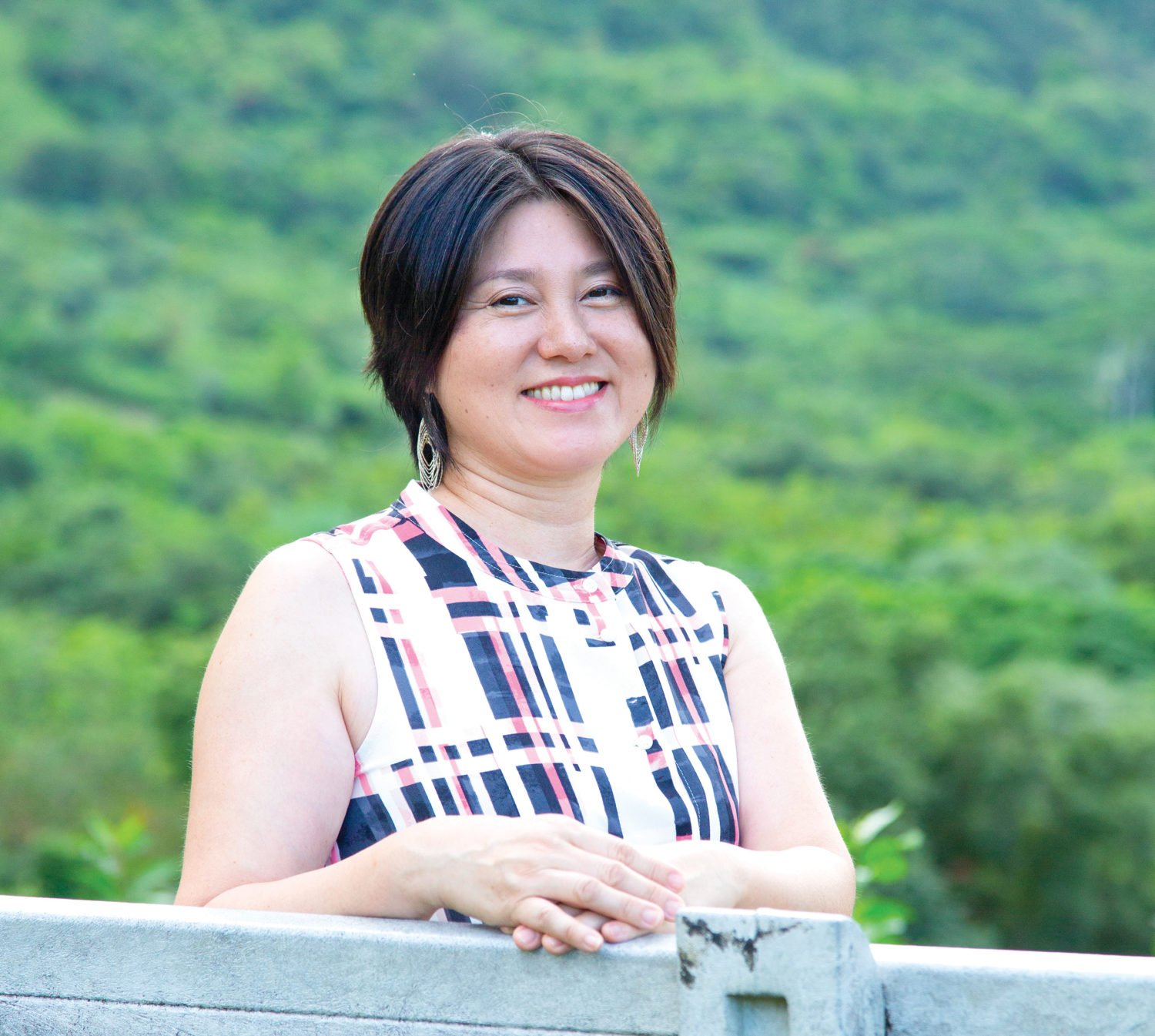Kimiko Price
WAIPAHU, HAWAII
Living Buddhism: Thank you, Kimiko, for sharing your experience with us.
Kimiko Price: Thank you for this opportunity. I also want to thank everyone in the SGI-USA for their tremendous support over the years.
How did you begin your Buddhist practice?
Kimiko: My childhood years were the darkest times of my life. My father was abusive, and my mother was diagnosed with cancer when I was in middle school. That’s when our neighbor introduced my mother to the SGI.
One day, I came home to find an altar with the Gohonzon enshrined in it.
My father threatened to throw out the Gohonzon many times, but my mother continued to chant Nam-myoho-renge-kyo while he was at work and read The Human Revolution diligently. My mother overcame her cancer and, while our circumstances at home hadn’t changed, I noticed that she had grown stronger.
Initially, I didn’t know what to think of it. Suddenly, we went from Christianity to Buddhism, which I thought was for older people and funerals.
I started chanting, though, because of the warm support of my future division leader who invited me to meetings and ordered us pizza, which was a delicacy in Japan at the time. Although my practice waned in high school and I stopped chanting, it left a deep impression in my life that, in times of struggle, I should chant Nam-myoho-renge-kyo to the Gohonzon.
What was your turning point in faith?
Kimiko: In 1991, when I was 18 years old, I moved to Hawaii to be with my sister. I didn’t really know what I wanted to do, but I wanted to escape home.
Things were good until 1997, when my boyfriend at the time had to return to Taiwan due to his visa expiring. I desperately wanted him to stay. So, toward his visa’s deadline, I chanted two hours every day, at times in tears.
As the day approached, I realized while chanting that even if he left, I would be fine as long as I had the Gohonzon and the practice. And for the first time in four years, I checked the district calendar that my women’s leader had been so persistently sending me.
During that time, I came across SGI President Ikeda’s essay where he spoke about the cosmos flower. He explained that, although beaten down by storms, the cosmos flower will put forth new roots and grow vigorously again. I felt that President Ikeda understood my life and was encouraging me to never be defeated and remain true to myself. I decided that he would be my mentor in life and that we would advance kosen-rufu together.
What changed from there?
Kimiko: I took on responsibility as a student division leader and started visiting and supporting other young women. Amid these efforts to care for others, I recalled second Soka Gakkai President Josei Toda’s guidance to young people:
There are so many young people who are incapable of having compassion for their own parents. How can they be expected to care about perfect strangers? The effort to overcome the coldness and indifference in our own lives and attain the same state of compassion as the Buddha is the essence of human revolution.
January 2019 Living Buddhism, p. 62
I realized I had to chant for my father and heal our relationship. Then, in 1999, my father had a stroke. I knew I had to go home. Before leaving, my friend Jonny told his mother, a women’s division member, about my situation. She encouraged me to read “The Four Debts of Gratitude,” where Nichiren Daishonin writes of the debt owed to one’s father and mother (see The Writings of Nichiren Daishonin, vol. 1, p. 43). I had never studied Nichiren’s writings before, but I read this passage every day to engrave it in my life.
In Japan, I made every effort to support my father, while chanting for him to receive the best treatment. He was eventually transferred to a hospital near the Soka Gakkai Headquarters in Tokyo. One day, my father told me, “Sumann-ne,” which is both an expression of apology and appreciation. In that one phrase, years of resentment melted.
On December 23, 1999, my father passed away. His face was so bright and beautiful. I didn’t get to talk to him about Buddhism, but I know he understood it with his life.
How moving. What brought you back to Hawaii?
Kimiko: I had returned to Japan to transform my karma and repay my debt of gratitude to my father. At the same time, I realized that my mission was in America. When I returned to Hawaii the next year, I chanted to dedicate my life to kosen-rufu.
Mystically, when my inner determination shifted, everything I was chanting for came true. I realized my friend Jonny was the lifelong partner for kosen-rufu I had been chanting for. We got married and started a family.

Kimiko Price with her family (inset, l–r): father-in-law, Walter Price, son, Kenichi, daughters, Alexis and Victoria, and husband, Jonny, at Ho’omaluhia Botanical Garden, Honolulu.
Congratulations! How did you advance as a family?
Kimiko: Jonny and I had three children—Victoria, Kenichi and Alexis—and, together, we gave our all to advance kosen-rufu.
The responsibility to take care of our precious members pushed me to do my very best with everything. I struggled with English, but I still went out into our neighborhood and talked to everybody about Buddhism. Engaging in shakubuku helped me develop my ability to communicate from the heart. It was the greatest training for my life.
Our biggest challenge and benefit came when Naomi, or “Nao-chan,” was born. At just 21 days old, she was diagnosed with bacterial meningitis, which had attacked her so severely that she was over 75 percent brain-dead. The doctors told us that she would never move, eat, see, hear or breathe on her own. We were at a loss.
How did you persevere?
Kimiko: With Sensei’s encouragement and the tremendous support of our fellow members, Jonny and I determined to change this poison into medicine. We studied President Ikeda’s lecture where he explains the three meanings of myo of Nam-myoho-renge-kyo: to open, to be fully endowed and to revive. He writes:
[The Lotus Sutra] has the power to revitalize and invigorate even those facing the most adverse and intractable circumstances and enable them to attain Buddhahood (the principle of “reviving”). By chanting Nam-myoho-renge-kyo and teaching others to do the same, we can concretely manifest the power of “the single character myo” in our own lives.
July–August 2008 Living Buddhism, p. 57
Together, we chanted day and night for Nao-chan’s victory, and shared this amazing practice with a total of 79 people. As a result, although the doctors said it would take months or years for Nao-chan to leave the hospital, she came home in just 38 days.

Nao-chan with her grandparents, Walter and Takako Price, October 2015. Photo by Darcy Siero.
What was life like when Naomi returned home?
Kimiko: From that moment, we faced many moment-to-moment, life-or-death battles. But with each challenge, she taught us that you can make the impossible possible through the power of prayer and shakubuku.
Nao-chan wound up doing many of the things doctors thought impossible, such as moving her limbs and breathing on her own. We are confident that our daughter showed great actual proof of this practice.
On February 16, 2019, Nichiren Daishonin’s birthday, Nao-chan passed away. She lived a beautiful 10-and-a-half years—well beyond what the doctors expected.
What were those final days with Naomi like?
Kimiko: During her final three months, she nearly died three times. But each time, she turned it around. She was a champion, and we called her “Rocky” because she always got back up.
Many doctors and nurses who cared for her over the years visited to say goodbye, including a pediatrician who took care of her for 10 years. They each came to witness the conclusion of a victorious life.
I missed her terribly and felt lost. But again, the SGI members warmly supported me. They sent me a photo of the February 1, 2019, World Tribune cover, which had the image of the Whirlpool Galaxy and its smaller neighboring galaxy.
Referring to this image, President Ikeda writes:
The photograph shows two beautiful spiral galaxies sitting companionable side by side—like a mother and daughter holding hands as they produce an infinite number of new stars.
February 1, 2019, World Tribune, p. 6
When I saw this photo, I thought, This represents Nao-chan and me. Together, we had introduced many people to the practice, and I felt at peace knowing that our lives are eternally connected through the Mystic Law. In my heart, I felt Nao-chan was urging me on, saying: “Mommy, don’t stop advancing. You never know how far you can go. So run until you can’t run anymore!”
Your spirit not to be defeated is inspiring. What did Naomi teach you?
Kimiko: Throughout her life, she taught me many lessons. Most of all, she taught me how life is so precious and mystic.
At first, I used to compare Nao-chan to other healthy babies, and wondered why she couldn’t do normal things. But she made me realize how fortunate I really was. My three children, despite not being able to go on vacation or do things that other families do, never complained. I’m so appreciative of them and my in-laws for loving her.
She also had this incredible strength and power to bring out the purest humanity in all of us. Because of her, I connected with so many people at a deeper level.
In this lifetime, I may have been her mother, but she was my senior in life. She helped me transform from a mother who was pessimistic and emotional to a mother who appreciates life’s hardships and moves forward with the spirit to never give up.
Thank you for sharing such a profound experience. This year, we are celebrating the 60th anniversary of President Ikeda’s first visit overseas. What are your determinations looking forward?
Kimiko: I truly feel it’s the end of an era and the start of a new one for both Hawaii and my own life.
Together with everyone in Hawaii Region, we are determined to create an organization where our biggest challenge is having too many capable people! We want everyone to awaken to their mission for kosen-rufu, strive with unity and joy, and receive tremendous benefits from their practice.
As a mother, my wish is for my children to go to Soka University of America. Sensei has mentioned that we go to college on behalf of those who are unable to. I’m determined that our family will contribute to society, help those in need and continue to do our human revolution.
Personally, after chanting about how I can use what Nao-chan taught me for the sake of others, I realized I wanted to become a nurse. It’s a daily struggle at school, but I constantly tell myself to never give up for Nao-chan.
Lastly, I am determined to continue my shakubuku efforts, especially with those whom Nao-chan introduced to the practice and left behind for us to foster. As mother and daughter, this is our shared struggle, eternally connected, eternally advancing, through the Mystic Law.
You are reading {{ meterCount }} of {{ meterMax }} free premium articles

